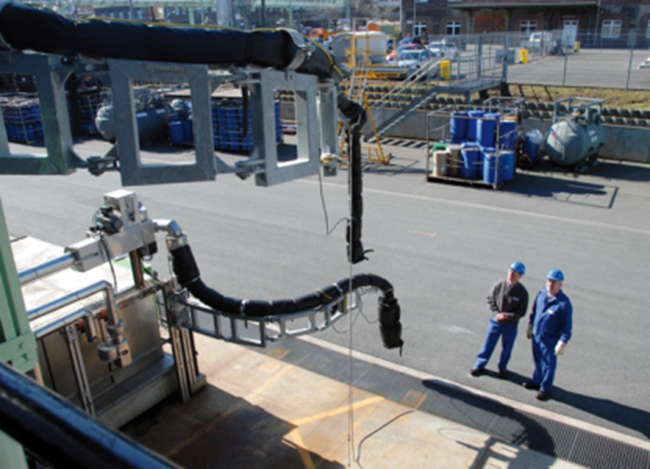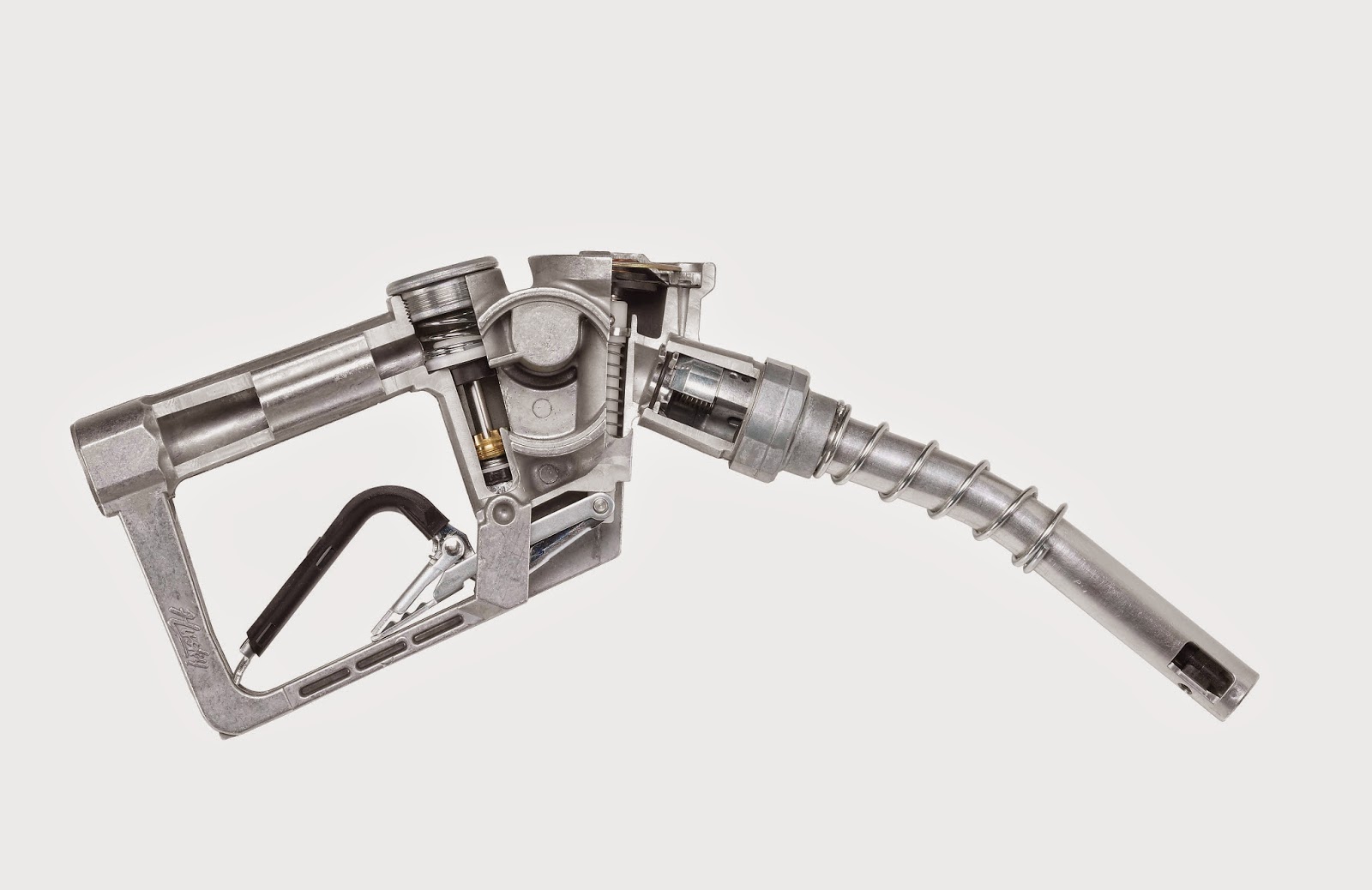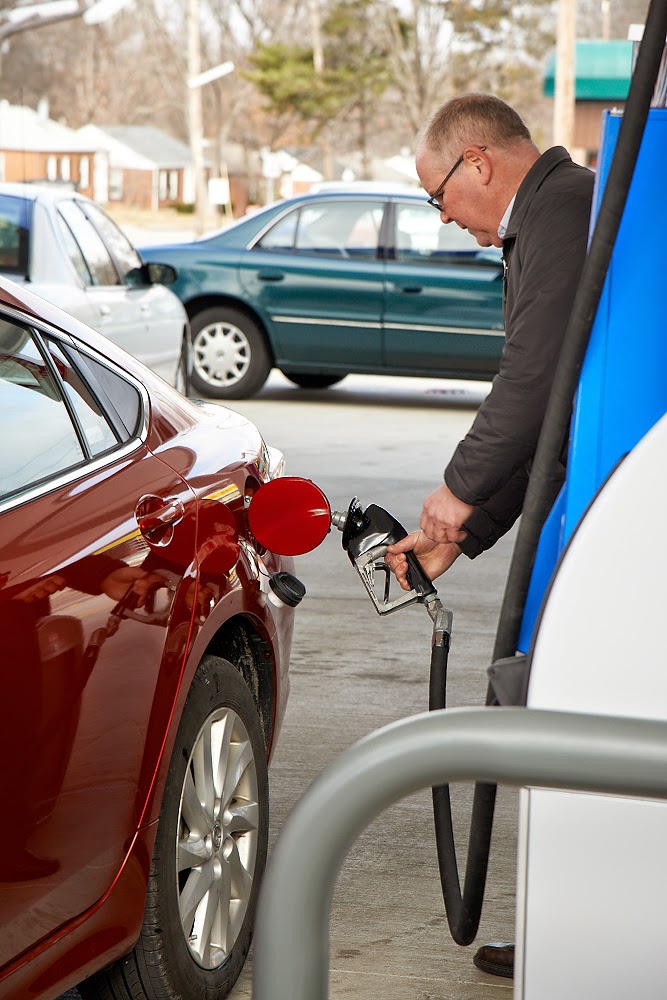Tuesday, April 28, 2015
Safe and Efficient Solutions for Transporting Liquid Chemicals
Moving large volumes of liquid chemicals is a demanding task that must be accomplished quickly and efficiently. But above all: Safely. It represents the life blood for chemical and pharmaceutical companies, which require loading systems to transfer their important products to customers in the safest manner possible.
For example what is the best way to load phenol, or carbolic acid, for transport by railcars to customers? One solution is to install a single RS Liquid Loading Arm, capable of moving 180 degrees so it can top-load two side-by-side railcars using a single hose assembly.
Thursday, April 23, 2015
Hewitt Osprey Product Review
Hewitt, a division of Husky Corporation, has engineered the Osprey Aviation Nozzle for over-wing fueling for small aircraft. The Osprey nozzle, which will be available in the market in the second quarter of 2015, serves aviation applications that do not require a large high-volume nozzle.
“We are getting everything up to date with aviation grade hoses and nozzles in all of our operations,” Martin said. “I like what they have done with this nozzle. And in the next two or three years it’s going to get a tremendous amount of use.”
This new product is just one more addition to our catalog of fueling products, all of which meet or exceed expectations. For more information about the Osprey Aviation fueling nozzle, contact Hewitt at 800-325-3558 or visit the website to check for updates: http://www.husky.com/
Osprey Fueling Nozzle Features
The new nozzle boasts a host of beneficial features, such as:- Automatic shut-off
- Easy-to-service 100 mesh stainless steel fuel filter assembly (required for aviation fueling applications)
- Dust cap to place over spout when the nozzle is not in use
- Grounding strip
- Aluminum body
- One piece contoured steel lever
- Red fuel grip guard to identify for use with aviation gas
Guntersville Field Test: “It’s a great nozzle!”
Hewitt has conducted extensive field testing to develop an aviation grade nozzle that is ready to install on fuel dispensers at small airports.
“It’s a great nozzle. We really like it,” said Bob Martin, Airport Manager for Guntersville, Alabama Municipal Airport after trying out the Osprey fueling nozzle in early 2015. “I like the idea of the automatic shutoff. It’s lightweight. I can see where it could be used for most aviation fueling operations.”
“It’s a great nozzle. We really like it,” said Bob Martin, Airport Manager for Guntersville, Alabama Municipal Airport after trying out the Osprey fueling nozzle in early 2015. “I like the idea of the automatic shutoff. It’s lightweight. I can see where it could be used for most aviation fueling operations.”
“We are getting everything up to date with aviation grade hoses and nozzles in all of our operations,” Martin said. “I like what they have done with this nozzle. And in the next two or three years it’s going to get a tremendous amount of use.”
This new product is just one more addition to our catalog of fueling products, all of which meet or exceed expectations. For more information about the Osprey Aviation fueling nozzle, contact Hewitt at 800-325-3558 or visit the website to check for updates: http://www.husky.com/
Friday, April 17, 2015
Additional Changes to Accommodate UL 2586
For a number of years, the National Fire Protection Agency (NFPA) has been advocating a particular safety requirement for automatic fuel nozzle valves that have a hold-open latching device, yet lack the ability to automatically unlatch when the dispenser shuts off. This can become a serious safety issue if these nozzles remain latched open when the dispenser is activated and accidentally discharges gas.
A Safety Precaution
To address this safety issue, UL 2586 will now require that all nozzles must either be pressure-activated or come equipped with an interlock device if they also have a hold-open device. The change in UL safety standards could affect as many as 30 percent of fuel dispensing operations which do not currently provide nozzles with no pressure-no flow devices. Those operations must come to terms with the reality that nozzles without pressure activation or an interlock device can no longer be used with a hold-open clip and maintain a UL listing.Top Quality Nozzles
Husky Corporation is available to answer any questions that arise concerning the new UL safety standards affecting fueling products. We understand these changes will affect your operations. The updates to UL 2586 will fully come into effect on April 30, 2015. The fueling products produced under this stringent standard will be even safer than in the past and of the highest quality.Monday, April 6, 2015
New Standards for Gas Nozzles to Handle Ethanol Blends
Underwriters Laboratories Inc. (UL) has set a rigid safety standard to take into account the chemical effects of ethanol on the construction, material, and performance on fuel nozzle valves. The new standards take effect April 30, 2015. Anticipated use of ethanol blends above 10 percent contributed to the decision to review and revise UL safety standards.
From UL 842 to UL 2586
Previously UL 842 covered fuel nozzle valves, but that will no longer be the case. UL 2586 is written for fuel nozzle valves that dispense gasoline with up to 10 percent ethanol (E10). And now UL 2586A will be in place for nozzles dispensing up to E85. These UL standards will affect all nozzle valves manufactured starting April 30, 2015.The Push for New Standards
It is widely agreed upon by scientists that higher ethanol concentrations have increased corrosive impact on rubber and soft materials that are commonly used in fuel nozzle valves. With the rising ethanol content in gasoline, the protocol for testing UL 2586A has become more stringent when compared to other previous standards.Extensive Testing
The materials required to meet the new UL standards are in most cases more expensive than previous components, which will bring a commensurate price increase. In order to pass UL test requirements and meet the new standards, several materials have been tested to determine the long-term effects of ethanol exposure. Only those that have passed the initial tests will be used in the manufacturing of new nozzle valves. These valves will also be subjected to maximum rated pressure during the UL 100,000 cycle endurance test for automatic shut-off nozzles.The Husky Standard
Husky Corporation continues to provide clients with high-quality fueling products that will meet UL standards. The conventional nozzles that are currently available on the market will meet every customer’s expectations or go beyond them. Rest assured that all materials used in creating the nozzles go through rigorous testing to ensure that they are safe to use.
Subscribe to:
Posts (Atom)





